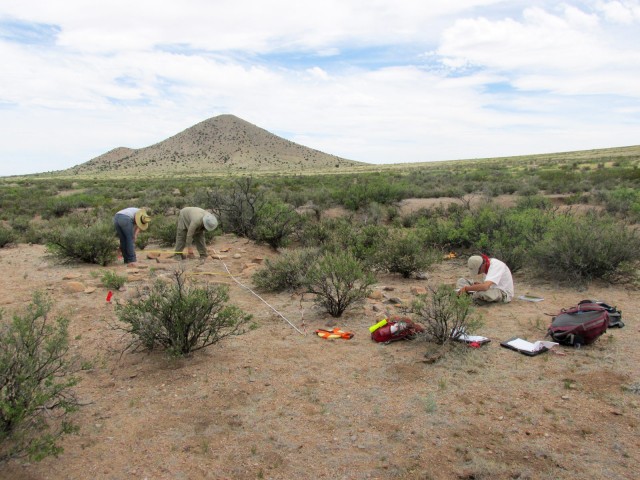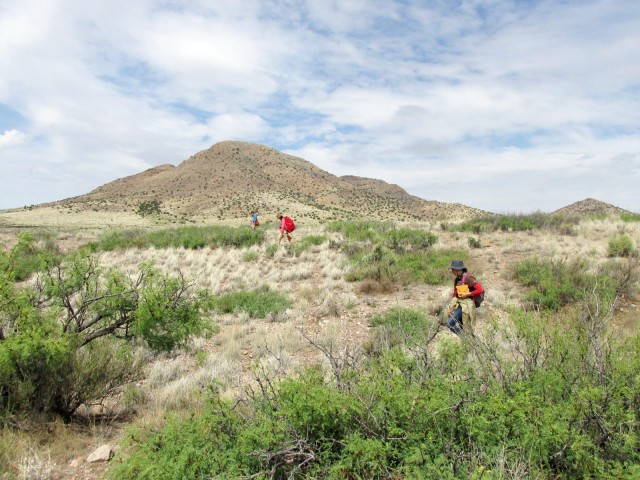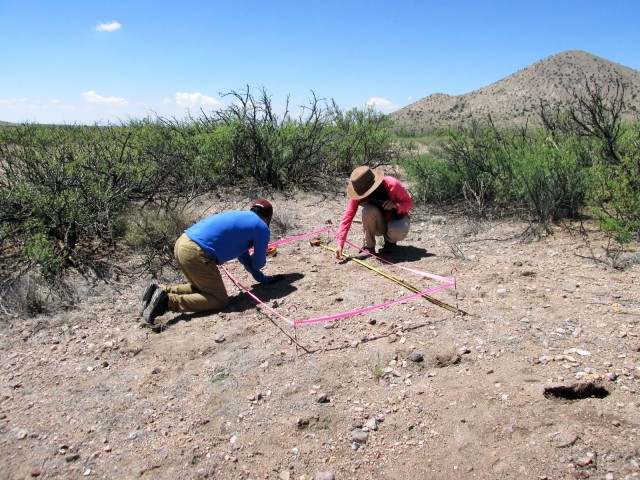- Home
- >
- Preservation Archaeology Blog
- >
- Survey equals fun; sort of.
Diana Trevizo, Eastern New Mexico University
The first time I heard that we were going to have the opportunity to participate in archaeological survey in addition to excavation, I was ecstatic! Before attending this field school, I had participated in mock excavations at Eastern New Mexico University and thus had a general idea of what I was getting myself into. Survey, however, was something that I had never participated in the past. Therefore, I expected nothing but rainbows and pretty pink flowers covering the wide open spaces as far as the eye could see.

In reality, the beautiful terrain sits at 5100’ in elevation in southwest New Mexico and consists of rolling hills of Chihuahuan grassland, with habitats dominated by Tabosa grassland, and more than 200 documented plant species, including 70 grasses, juniper, willow, oak, ash, hackberry, Arizona walnut, and wild grape in the canyon. This particular survey entailed three days of hiking in 90+ degree weather and lugging around surveying equipment, water, and snacks for the day.
We arrived at our survey location and it closely resembled what I had envisione—everything except for the bathroom accommodations. The bathroom situation had a certain ‘je ne sais quoi.’ Conjure up a picture in your mind of an outhouse; then just strip that outhouse into the most simplistic, doorless structure possible and you’ll have a good image of ours.

Our survey experiences included learning how to adjust a compass to account for the magnetic north declination, how to read a topographic map, and how to plot coordinates onto it with accuracy. We were also instructed on the plants and animals that were native to the habitat we were surveying, and on how to spot and distinguish different types and styles of pottery sherds and lithics. Our amazing surveying instructor Barry also showed us how to map a site, use GPS coordinates, locate pithouse features, and spot evidence of looting that had taken place in the past. Pacing the rolling grasslands was an adventure that I will never forget, no matter where my archaeological endeavors take me.
I appreciate what our instructors teach us on a daily basis; even though I may not voice my gratitude towards them, I hope they know that I really appreciate them being out here in the field with us, away from their family. Thank you for giving me this opportunity and for letting me be a part of this wonderful experience, which I will carry with me, always.

Explore the News
-
Join Today
Keep up with the latest discoveries in southwestern archaeology. Join today, and receive Archaeology Southwest Magazine, among other member benefits.